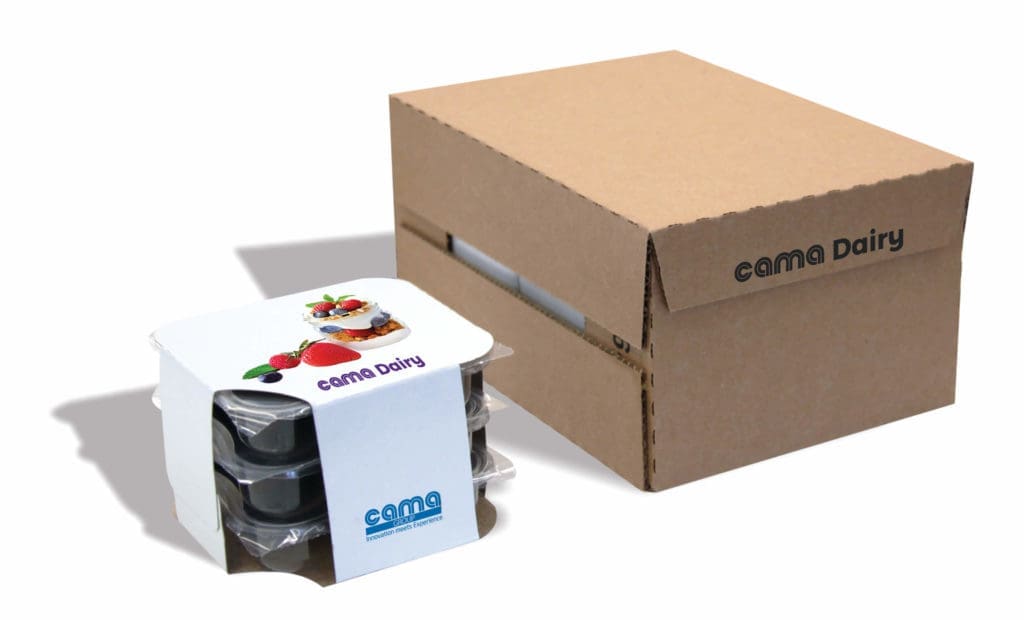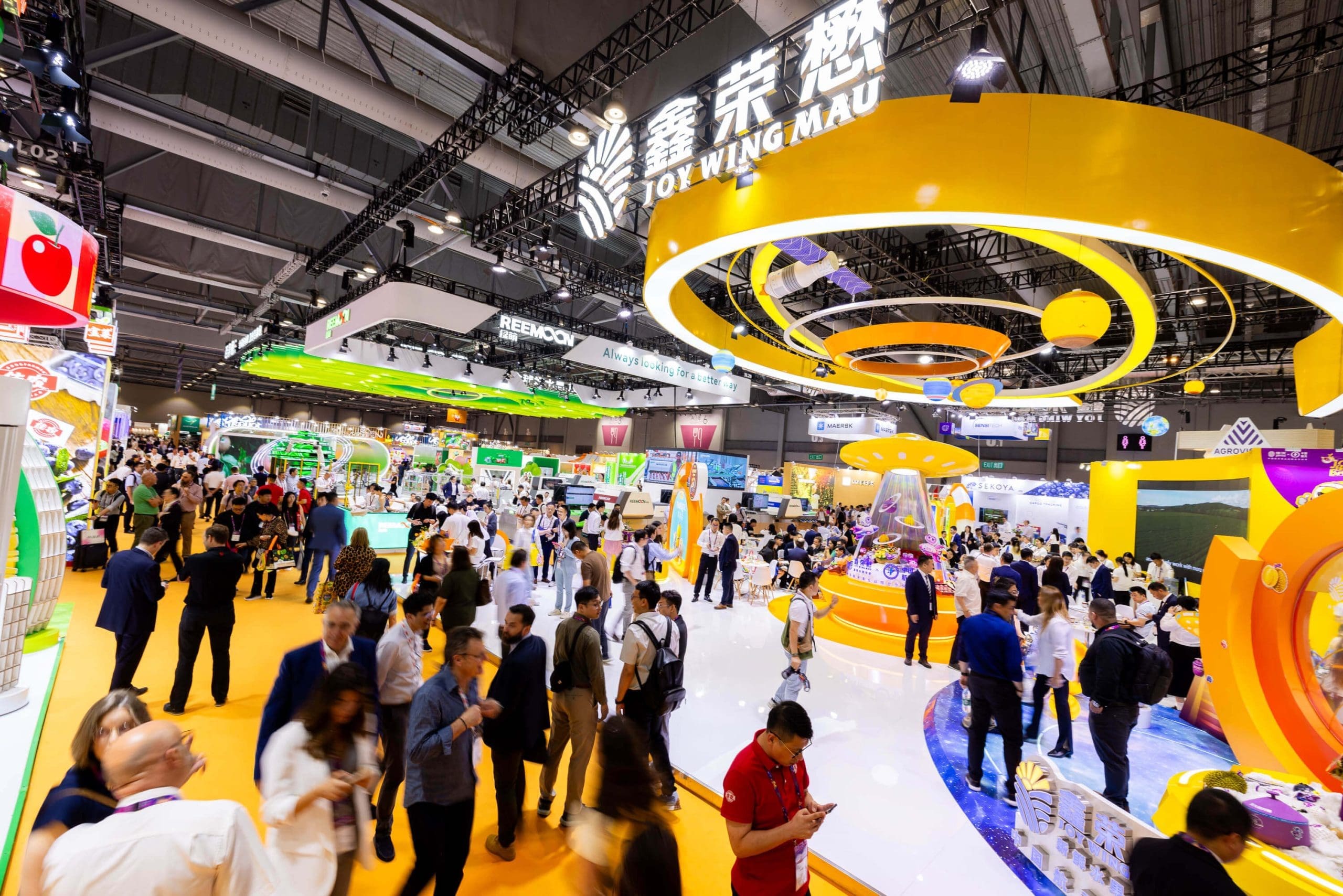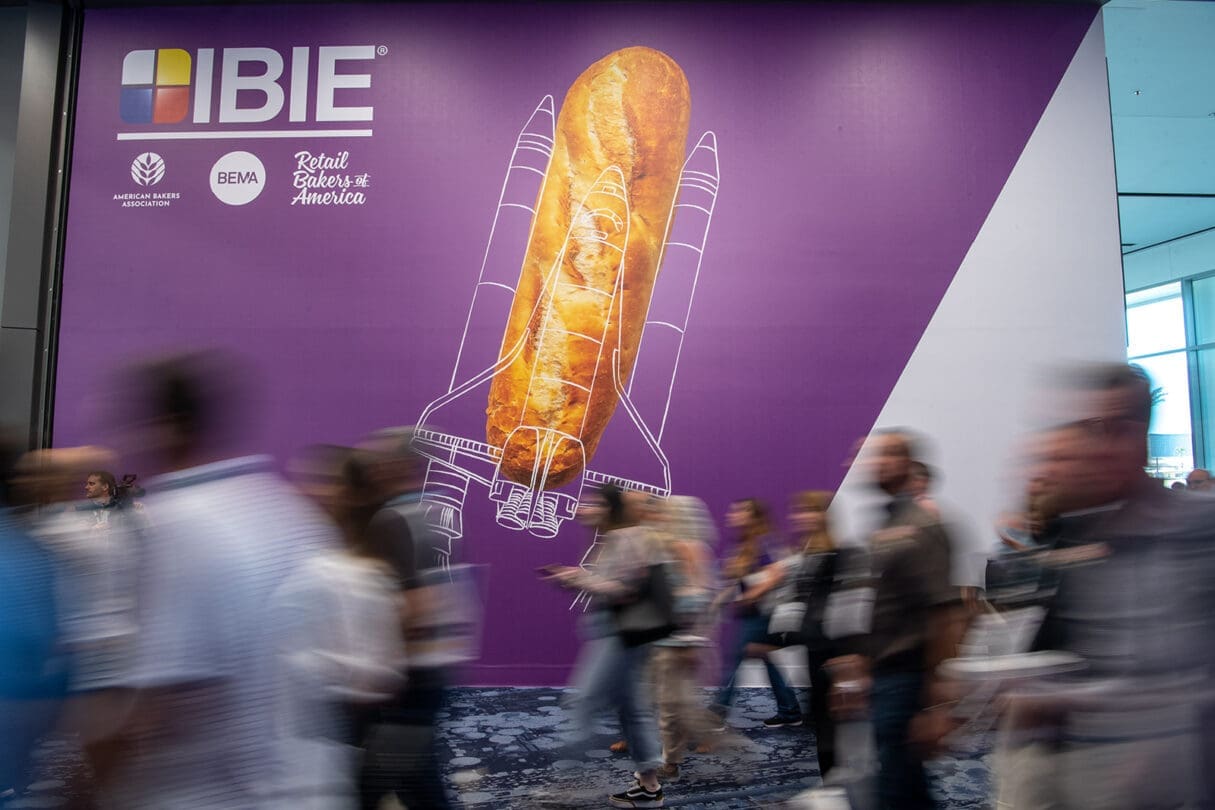When it comes to secondary packaging machine design, there is more than just the product to consider. Machine builders must also take into account the factory shape and real estate, as well the orientation and flow of the products from the upstream processes.
At a recent dairy-snack packaging application in North America, secondary & tertiary packaging specialist Cama Group was presented with a multi-faceted challenge.
Primarily, the customer wanted to replace its existing sleeving machine, and initially wanted to keep the sleeve blank format the same. The new machine had to fit into the current real estate as well as accept products coming from downstream primary packaging at 180° to ‘normal’ infeed. Compounding these challenges was a requirement to package two different tray types flat into sleeves in threes or sixes, or standing into shelf-ready carton trays in eights or twelves.
Finally, during the project’s design process, the marketing team at the customer decided it wanted a modified sleeve design similar to that of a leading competitor, which added further complications to the machine’s design, especially the closing and gluing processes, which had to be faultless in order to maintain the shelf appeal.
Individually, these would present big problems to a machine builder, but this is Cama we’re talking about here. According to Davide Di Lorenzo, Sales Engineer Manager at Cama Group: “Not only have all the functional issues and demands been addressed, but the customer now has a sleever / case packer combination that offers a throughput of some 360 packages per minute.”

The turnkey line developed by Cama comprises a two IF318 toploading sleevers followed by an FW748 wraparound case packer. “When you develop a line for customers, you must connect with upstream machines,” Di Lorenzo explains, “and it is perfectly normal to request a particular product orientation.
But in this case, due to sleeve change, the products would be entering at 180° to what we needed. The customer could not change the complete line for Cama, so we changed our machines to suit their needs.” Upon machine entry, the products enter a snake conveyor which ‘corrects’ the in-feed orientation. In parallel, carton sleeves are picked from a carton magazine and placed six at a time into a mono-axis shuttle conveyor.
The incoming trays are then placed into a racetrack using robots equipped with grippers from Gimatic ; designed using specific requirements from Cama’s engineers. These grippers take hold of the trays at their edges – to avoid any damage to the packaging – and stands them in an upright brand-forward position ready for loading into the six pre-formed sleeve packs.
Once loaded, hot melt is applied to the lateral flaps, which are then closed using servo-driven pressure plates.
The customer had a specific demand that there were to be no flaps overlapping any of the external front faces. As a result, Cama’s engineers designed a clever procedure where a robot head pushes the face panel outwards so that the glued upper flap can be tucked inside, maintaining the all-important smooth outward appearance demanded by the customer.
“This capability is unique to Cama,” Di Lorenzo explains. “The previous supplier tried to modify its machine to achieve this functionality, but was unable to attain the necessary quality levels; the machine was simply not doing what the customer wanted. The customer was adamant that the sleeve shape was not to change, so the end result was its appointment of a machine builder that could tick all the boxes.”

Following the secondary packaging, the multipacks are then transported to the case packer where more Cama magic was to take place. “The customers original tertiary packaging involved the use of RSC cases,” Di Lorenzo continues, “but these are not efficient in terms of material use and storage, as they are supplied preglued. Our solution was to design a wraparound case format that could be constructed from flat blanks. Not only does this save 43% in material use, but 25% more cases can be stacked in each palette layer – 5 x 4 compared to the original 4 x 4.”
Every application is unique, as are the resulting solutions. So, in order to offer solutions that address even the most stringent needs, you must have broad capabilities and knowledge, not just of the markets and their products, but the technologies and processes used to package them.
“This application demanded a fully digitalized solution; therefore, we deployed our full Industry 4.0 offering. This was not just on the technology front, but also as a consultant, running a seminar for engineers and operators at the customer, so they could get the very best out of this very capable platform. The digitalized approach also makes operator training, machine interactions and maintenance routines far simpler, thanks to immersive augmented reality (AR). And, to keep uptime to an absolute maximum, it exploits our ‘toolless’ RFID-managed changeover solution, which makes the minor reengineering required between format changeovers as quick and intuitive as possible.
“As well as highlighting our capabilities as a machine builder,” Di Lorenzo concludes, “this application is a graphic example of our capabilities as a packaging consultant too.
Customers should not have to put up with the limitations of a machine builder; instead, machine builders must develop solutions that match the precise needs of the customer. It is for this reason that we see so much repeat business from some of the world’s biggest brands.
They know they will get the precise features and functionality they need, as opposed to a mixture of near misses.”





